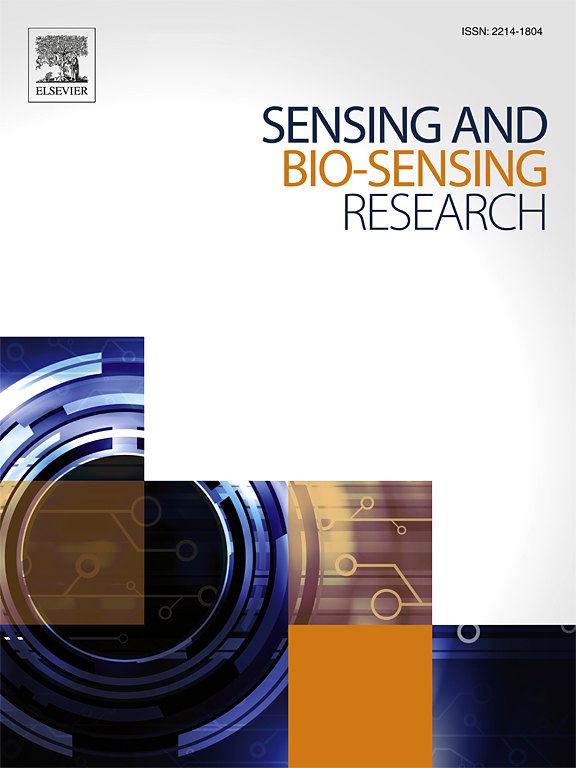Design and fabrication of multiplex microfluidic LAMP PCR for simultaneous detection of opportunistic protozoa
IF 4.9
Q1 CHEMISTRY, ANALYTICAL
引用次数: 0
Abstract
Intestinal parasites are a health problem in many regions, especially in developing countries. Giardia lamblia, Cryptosporidium spp., and Enterocytozoon bieneusi are of great diagnostic importance, particularly in immunocompromised patients and children. This study aimed to develop a multiplex microfluidic LAMP (MμLAMP) PCR for rapid detection of three protozoa. The LAMP primers were designed for the parasites. The microfluidic disk with different compartments was designed using AutoCAD software and fabricated by laser beam. After DNA extraction, the amplifications were performed for all positive samples using MμLAMP PCR. Sensitivity and specificity of tests were calculated and the results were compared to the real-time PCR. The LAMP analysis revealed that 29/30 (96.7 %), 12/19 (63.2 %), and 25/30 (83.3 %) samples were positive for G. lamblia, Cryptosporidium spp., and E. bieneusi, respectively. The specificity results of the LAMP method were high and the sensitivity test results indicated that the LAMP method has the ability to detect 180 ag/μL of G. lamblia DNA, 2.5 fg/μL of Cryptosporidium spp. DNA, and 34 ag/μL of E. bieneusi DNA. The multiplex accuracy results of microfluidic disk showed that none of two-parasite DNA mixes with their non-specific primers cause false positive results. The present study simultaneously detects G. lamblia, Cryptosporidium spp., and E. bieneusi. The current results indicate that the MμLAMP PCR method is a rapid, sensitive, and highly specific method for simultaneous detection of G. lamblia, Cryptosporidium spp., and E. bieneusi in clinical studies, making it a suitable tool for screening and point of care (PoC) testing.
同时检测机会性原生动物的多重微流控LAMP PCR设计与制备
肠道寄生虫是许多地区,特别是发展中国家的一个健康问题。贾第鞭毛虫、隐孢子虫和双胞虫具有重要的诊断意义,特别是在免疫功能低下的患者和儿童中。本研究旨在建立一种快速检测三种原生动物的多重微流控LAMP (μLAMP) PCR方法。设计了LAMP引物。利用AutoCAD软件设计了具有不同隔室的微流控盘,并采用激光束制造了微流控盘。提取DNA后,用μ lamp PCR对所有阳性样品进行扩增。计算检测结果的敏感性和特异性,并与实时荧光定量PCR进行比较。LAMP检测结果显示,29/30份(96.7%)、12/19份(63.2%)和25/30份(83.3%)的样本分别为兰氏弓形虫、隐孢子虫和布氏弓形虫阳性。LAMP方法特异性高,灵敏度测试结果表明,LAMP方法可检测出180 ag/μL的兰氏螺旋体DNA、2.5 fg/μL的隐孢子虫DNA和34 ag/μL的比氏伊布氏体DNA。微流控盘多重精度结果表明,两种寄生虫DNA混合及其非特异性引物均不产生假阳性结果。本研究同时检测兰氏螺旋体、隐孢子虫和布氏螺旋体。本研究结果表明,μ lamp PCR方法在临床研究中具有快速、灵敏、高特异性的同时检测兰氏弓形虫、隐孢子虫和比氏弓形虫的方法,是一种适合于筛查和护理点(PoC)检测的工具。
本文章由计算机程序翻译,如有差异,请以英文原文为准。
求助全文
约1分钟内获得全文
求助全文
来源期刊

Sensing and Bio-Sensing Research
Engineering-Electrical and Electronic Engineering
CiteScore
10.70
自引率
3.80%
发文量
68
审稿时长
87 days
期刊介绍:
Sensing and Bio-Sensing Research is an open access journal dedicated to the research, design, development, and application of bio-sensing and sensing technologies. The editors will accept research papers, reviews, field trials, and validation studies that are of significant relevance. These submissions should describe new concepts, enhance understanding of the field, or offer insights into the practical application, manufacturing, and commercialization of bio-sensing and sensing technologies.
The journal covers a wide range of topics, including sensing principles and mechanisms, new materials development for transducers and recognition components, fabrication technology, and various types of sensors such as optical, electrochemical, mass-sensitive, gas, biosensors, and more. It also includes environmental, process control, and biomedical applications, signal processing, chemometrics, optoelectronic, mechanical, thermal, and magnetic sensors, as well as interface electronics. Additionally, it covers sensor systems and applications, µTAS (Micro Total Analysis Systems), development of solid-state devices for transducing physical signals, and analytical devices incorporating biological materials.
 求助内容:
求助内容: 应助结果提醒方式:
应助结果提醒方式:


